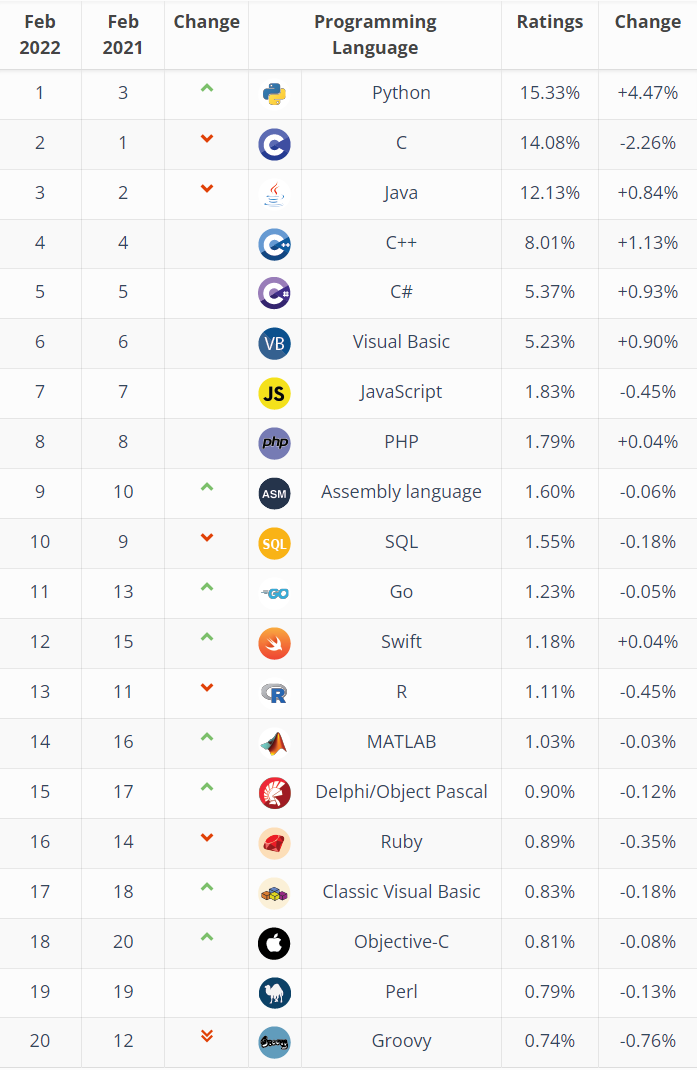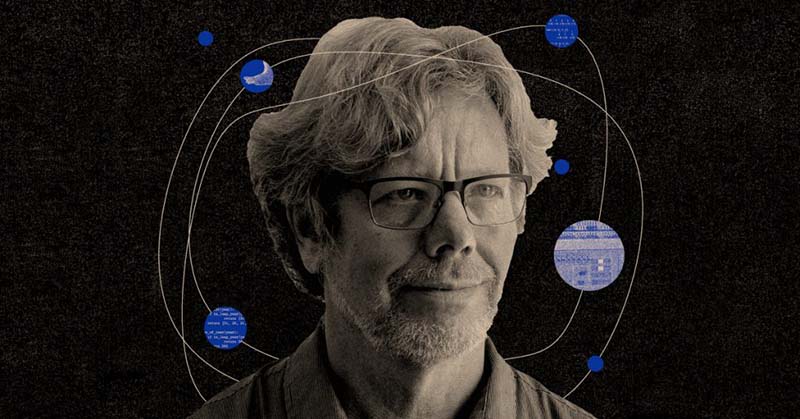
Even though having a job in the IT industry was very interesting among students even before the pandemic outbreak, many things changed in this industry after 2020.
Research that tracks Covid-19 unemployment showed that the lockdown strategies, and the health crisis in general, hit hard industries like leisure and hospitality.
However, this change sped up the digitization processes of previously provided services. Also, all other sectors realized that they could no longer function without joining the digital world.
That is the reason why even the smallest companies turned towards creating their websites, apps, and web-shops. That was the only way to stay in touch with their customers 24/7.
Another reason that caused a skyrocketing demand for software engineers was investors who started to put more money into startups and existing tech companies. In Europe, startups have raised 43.8 billion euros in the first months of 2021. According to the report from "The State of Europen Tech" , the total investment into European tech was $41 billion during 2020.
For now, it looks like this demand for software engineering jobs will stay high. This is because the world now understands the importance of having a good tech product. And NIT Academy understands that the essential thing for creating software products is educating programmers with the best IT courses in the industry.
Contents
1. How to get a job in the IT industry?
The question that remains unanswered for many people who want to become software engineers and IT experts - how to find the best technical courses to get a job in the IT industry?
First of all, it is essential to determine what IT course is necessary to enroll in in order to pursue your career path.
According to TIOBE and their November 2021 statistics, the most popular and in-demand currently is Python, followed closely by C and C++.

As an institution with a lot of experience in the education of future software engineers, NIT Academy is constantly adding new IT courses and is mainly focused on advanced programming skills. Also, we have some basic courses for people who don't have an engineering background.
We created this article to help you decide which IT course to pick, and we hope that you will get a lot of exciting information to help you land a better job and work on higher-paying projects.
Our main goal was to make it easier for you to show you how different C programming languages and Python are. We also explained what Git Gerrit is, and how to excel as a project manager in the IT industry.
The first three paragraphs will explain the main difference between software developer and software engineer jobs.
However, if you already know all this, you can skip this part and read about our best IT courses on NIT Academy for skyrocketing your career in programming.
2. What are the differences: Software Developer vs Software Engineer
A common misconception is that software engineer and software developer jobs are the same things. Although they are connected, they are also mutually exclusive.
Developers essentially do the same thing engineers do, just on a limited scale.
For example, software engineers create tools that later developers use to create apps and programs.
On the other hand, software developers talk to clients and manage the entire project from beginning to end. While a software engineer works with other engineers on specific components, a developer works on a complete program and typically works alone.
Software engineers are the ones who build software systems, and because of that, they are always working hands-on and applying engineering principles to test and create the product.
Overall, software engineers are more technically skilled than developers, and they also have higher salaries. Additionally, a software engineer can easily work as a software developer, but a developer can't get into engineering that quickly.

2.1. What is a software engineering job?
As mentioned above, software engineers build, develop, launch, and maintain software systems. To explain this more closely, we can say that software engineers work on all aspects of software development, from start to finish.
Software engineering has become one of the essential fields in the past decade because everything around us works thanks to numerous software. Thanks to how technology moves forward, this industry is getting more significant each year.
Without software solutions, it would be impossible to imagine the growth and development of any industry nowadays, especially those important for the advancement of society.
A software engineering job revolves around computers as the primary tool for solving problems. So, some of the functions you can find on a computer are used as tools for software development.
Since software development is a lengthy and vital process, software engineer jobs are among the most sought-after and well-paid IT jobs. As a result, the demand for software engineers is only getting bigger.
2.2. What IT course do I need to get my first software engineering job?
Software engineers need to know at least one programming language, but the more, the merrier. Engineers who always continue learning and improving have top-class jobs and higher salaries.
To work as a software engineer, you typically need to have a university degree or some knowledge to start with.
However, if you are gifted and hardworking, you can become a software engineer even without a traditional education. Still, you need to invest in the best IT courses that provide a hands-on approach because that's the only way to understand what you learn.
If you have a traditional degree, you're halfway there. Although the knowledge you gain at university is naturally beneficial for your career, that is not enough. You need to upgrade that knowledge to keep up with new technologies and land more exciting and more profitable projects in the future.
So, in the spirit of advancement and knowledge, let's take a look at all software engineering certificate IT courses that NIT has to offer.
3. Python: Clear and Logical Programing Language
Python is one of those programming languages that even people utterly unrelated to the IT industry recognize. Designed by Guido van Rossum, this high-level language first appeared on February 20th, 1991.
It's used for general purposes and, with its use of significant indentation, it emphasizes code readability. Many software developers choose Python as their go-to programming language because of its clear and logical structure.

3.1. What is Python Programming Language?
Python is a backend web language that sounds scary to most people but is quite easy and approachable for beginners.
The main reason is that Python prefers simple constructions and is less wordy than most programming languages. Basically, Python allows you to write programs in fewer lines of code. At NIT Academy you can enroll in a Python Programming course, and finish it in just fifteen days.
3.2. Python Programming Examples
Python has been gaining popularity over time, and nowadays, it is challenging to find a software engineering field where it isn't used to some extent. Examples of Python programming can be found primarily in data science, engineering, and analysis, software and web development, and business applications. Other examples are found in mathematics, science, and engineering (numeric calculations, modeling, and visualizations), as well as testing automation and education and teaching. It's used by companies worldwide, including giants such as Google, Spotify, Dropbox and Pinterest, Netflix, Youtube, and Facebook. Python is used with web frameworks, most often with the popular Django and Flask.
4. Basics of C++
C++ is one of the oldest programming languages in the world, and interestingly enough, it hasn't lost popularity over time. C++ is constantly in the top 5 languages, which says enough about its usability and importance. Nowadays, you can find C++ everywhere around you.
4.1. What is C++?
C++ is a general-purpose, object-oriented language. It was developed in 1979 by Bjarne Stroustrup from the C programming language, so it had all the properties of C, with the addition of user-defined data types called classes. This is why C++ was originally called C with classes until it was renamed in 1983.
4.2. Coding C++
C++ can be coded in C style or in object-oriented style. In some cases, C++ can be coded both ways, which makes C++ an example of a hybrid programming language. Additionally, C++ allows self-memory management by using pointers. This enhances the execution speed of a program. Since C++ enables the processor to be manipulated on a lower level, it's significantly faster than some other advanced-level languages.
4.3. Differences between C and C++
The main difference between C and C++ is essentially what we already mentioned: C is a procedural programming language that doesn't support classes and objects, whereas C++supports both procedural and object-oriented programming paradigms. Additionally, since C doesn't support encapsulation, data is considered a free entity and hence can be manipulated externally. On the other hand, C++ hides data, so external manipulation isn't possible. While C is known as function-driven, C++ is known as an object-driven language. Finally, C also doesn't support function and operator overloading, unlike C++. The result is that C doesn't have a namespace feature and reference variable functionality, while C++ does.
5. Advanced C
As the name suggests, Advanced C is an extension of the C programming language that has some additional features. Advanced C is essentially used for embedded programming, but it's important to remember that Advanced C isn't a different language. We are still talking about C.
5.1. What is Advanced C programming?
The simplest way to explain this is to say that Advanced C lets you reach new heights of C. In other words, the topics that are difficult to understand in C are considered to be Advanced C.
For example, C topics include data types, functions, control flow, and pointers. Advanced C deals with topics such as data structures and specific algorithms (sorting, searching, etc.).
6. Modern C++
Just like Advanced C isn't a different language from C, neither is Modern C++ different from C++.
Now, C++ is one of the most flexible programming languages, and for this reason, it can create almost any kind of program, from video games to mobile applications.
So, what does Modern C++ bring to the table?
6.1. Modern C++ concepts
As we mentioned earlier, C and C++ have some major differences. Although C++ always enabled great performance by permitting C-style programming, it was very complex and had occasional bugs. Because of this, C programming facilities were still used occasionally. One of the original requirements for C++ was backward compatibility with the C language.
With Modern C++, we need C facilities less and less. The idea of Modern C++ is that the code is simpler, safer, faster, and more elegant.
6.2. What is Modern C++?
Modern C++ solves some issues that C++ has. Let's start with one of the major classes of bugs called a memory leak. This bug derives from C, which is caused by failure to delete the memory allocated with new. Modern C++ solves this problem by emphasizing RAII (resource acquisition is initialization). Resources are owned by an object that creates or receives new resources in the constructor and deletes them in the destructor. This principle guarantees that resources are correctly returned to the operating system when owning an object is out of scope.
C++ solves some other sources of bugs, such as C-style strings. Additionally, one of the most important features of C++ is the extensive use of standard library algorithms, an assortment of algorithms for many everyday operations such as searching, sorting, filtering, and randomizing.
So if you have knowledge of basic C++, and access to Chrome and the internet, you can learn Modern C++ at the NIT Academy in less than 3 months.
7. Embedded Linux
The birth of the Linux operating system dates back to August 1991, when Linus Torvalds announced it as a hobby, claiming it will probably never support anything other than AT-harddisks. Looking back at this, we can hardly hold back laughter, knowing that more than 96.4% of the top 1 million server applications are run on Linux today.
7.1. What is Linux?
Linux is the name for the kernel and a series of operating systems under GNU GPL. Linux is similar to other operating systems such as Windows in many respects. For example, it can have a graphical interface and desktop software that you all know, such as word processors, photo and video editors, etc. But in many ways, Linux is also different. The first and most crucial difference is that Linux is open-source software. It means that the code used to create Linux is available for the public to view, edit, and contribute to it. Another difference is that many Linux distributions include different software options, although the core pieces of Linux are generally widespread.
7.2. What is Embedded Linux?
As the name suggests, Embedded Linux is a type of Linux kernel/OS designed for use in embedded systems or devices. Although it uses the same kernel, Embedded is quite different from standard Linux. Since it's tailored for embedded systems, it is smaller, has minimal features, and requires less processing power.
Embedded Linux is flexible, open-source and low-cost, and adapts to specific purposes. When comparing Linux to other proprietary embedded systems, Linux allows multiple software, support, and development vendors and enables reading, modifying, and redistribution of source code.
7.3. Devices that use Embedded Linux
Embedded Linux became quite popular amongst embedded systems engineers, and we can freely say that you can find Linux in any kind of consumer electronics device. Typical examples would be phones, tablets, smart TVs, wireless routers, cameras, video recorders, digital storage devices, and others. Linux is also used in cars, machine control, navigation, industrial automation, spacecraft flight software, and medical instruments. Even Microsoft has Linux components, but the most famous example of embedded Linux is Android OS, developed by Google.
8. Advanced Android Programming
If you're a fan of smartphones and coding, this might be the course for you. Since Android's release date, September 23rd, 2008, this operating system has only been on the rise, and it helped revolutionize smartphones massively. That resulted in more and more people wanting to be a part of it. Instead of focusing only on application programming, the course covers "under the hood" concepts of Android, such as build and debugging concepts, binding and memory sharing, Media Codec API, as well as Android Hardware Abstraction Layer.
8.1. Best programming languages to make Android apps
Like we mentioned previously, the powerful Linux kernel is in the heart of Android OS, and it manages input and output requests from the software. So, Linux provides basic system functionalities like process, device, and memory management.
However, in order to work on Android app programming, you don't need to learn Linux. The number one programming language for Android is Java, which has been the dominant language for Android for a while. What makes Java so dominant is its reliability and maturity, but also the fact that it's beginner-friendly.
Another important language for Android is Kotlin, which is relatively young. It's simple, efficient and compatible with Java. It's essentially a younger version of Java - modern, more readable code and attractive layout make Kotlin the 2nd best choice for Android app programming. Following Kotlin is C++, which we already covered.
9. Git Gerrit
Git Gerrit course will teach you how to use one of the most common tools for code storage, versioning, and team review. Gerrit is a web-based code review tool integrated with Git and built on top of the Git version control system. Git Gerrit helps developers work together and maintain the history of their work. Furthermore, it allows merging changes to the Git repository when the programmer finishes working with the code reviews. In this course, the participants would be familiarized with these tools and be prepared to utilize them in their everyday programming work.
9.1. What is GIT?
Git is a free version control system designed to handle all kinds of projects quickly and efficiently. It's used worldwide because it's easy to use and helps you track changes or different versions of your code. GIT is particularly useful when you're working on a project over time and when you collaborate with other developers. Apart from being easy to learn and having a tiny footprint with high-speed performance, GIT outclasses similar tools with features like multiple workflows, cheap local branching, and convenient staging areas.
9.2. What is Gerrit?
Gerrit is a free, web-based team code collaboration tool, much like Git. We can say that Gerrit is a review system for projects using Git, as it integrates closely with it. Software developers can review each other's changes or modifications on the source code and manage workflows with delegatable and deeply integrated access controls.
10. Project Development with SCRUM
Agile project development with SCRUM enables teams to work together. With SCRUM, teams learn through experience, self-organize while working on a problem, and continuously improve. Scrum framework is often called "agile project management framework". It usually includes a set of meetings, roles, and tools that work together to help teams manage their work better.
10.1. Agile vs Scrum
Agile represents software development methodologies that are centered around the idea of development. It helps self-organizing, and cross-functional teams evolve requirements and solutions through collaboration. The end goal is the greater value, quality, predictability, faster and better response to change. Scrum is simply a subset of Agile. It's the most widely-used lightweight process framework for agile development. We can say that Scrum is a specific Agile methodology that helps implement Agile ideas while facilitating a project.
10.2. Kanban vs Scrum
Kanban is a less known and less used methodology than Scrum, but the two don't necessarily need to be contrasted. A lot of Scrum teams use Kanban for visual processes and project management tools. In Scrum, everyone agrees on a large, overall plan that is later broken up into smaller segments. Teams do the same set of activities in cycles performed in a specific order and manner. In Kanban, activities aren't typically tied together. Kanban is a visual system for managing work, and its main objective is to identify possible bottlenecks and fix them. It visualizes both the process and the work involved in the process. Overall, Scrum is considered the better of the two, but you shouldn't avoid using both.
To sum up…
There are a lot of advanced IT courses on the market nowadays but rarely do any of them provide you with the skillset which enables you to work on new projects. If you want to learn about software engineering or get a software engineering or software development job, you came to the right place. In this article, you can find all of NIT Academy's certificate software engineering courses and learn more about them. If you are interested in more information, you can find detailed course descriptions on our website or contact our staff.



